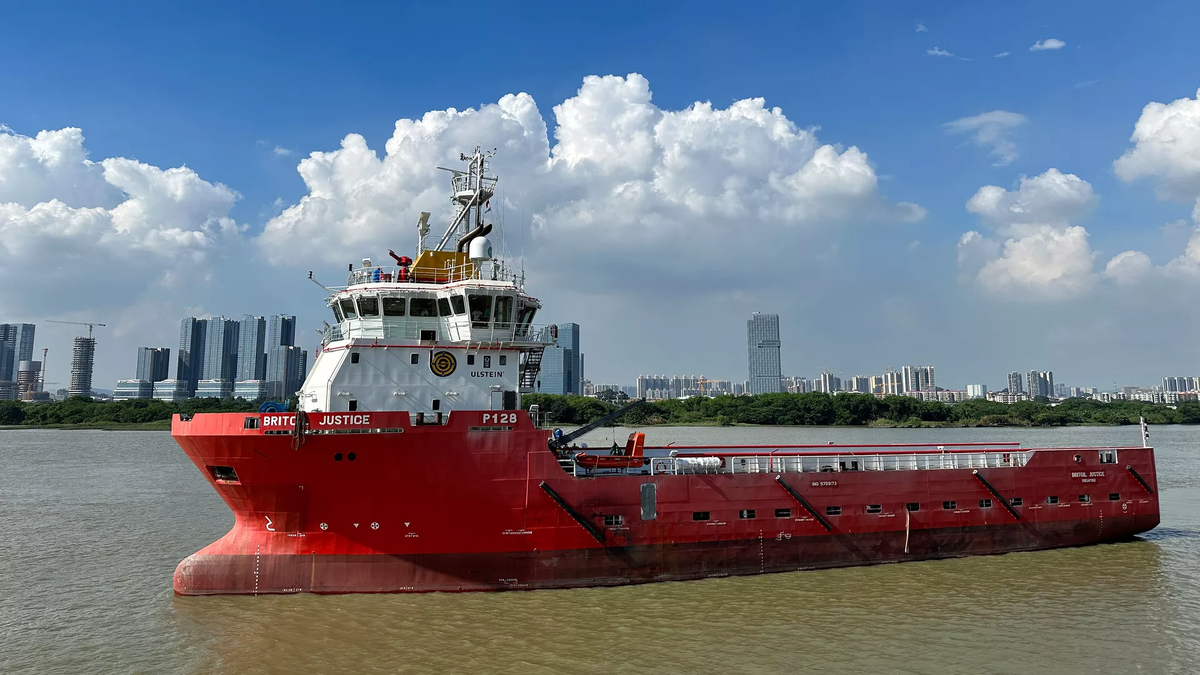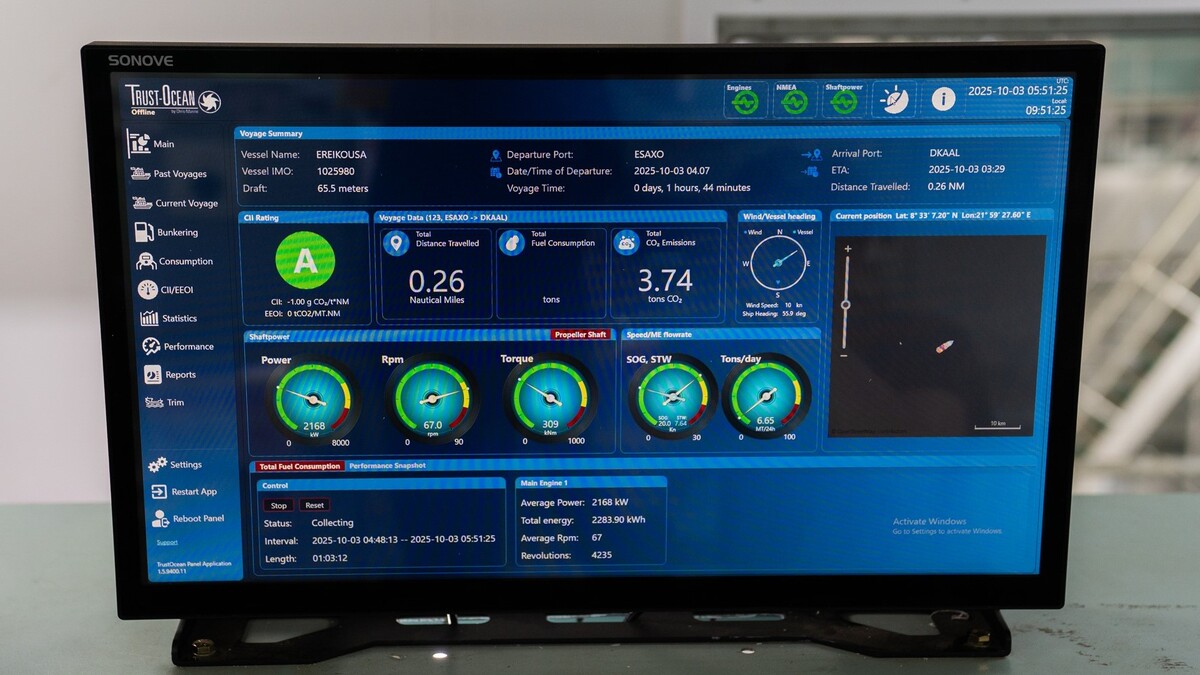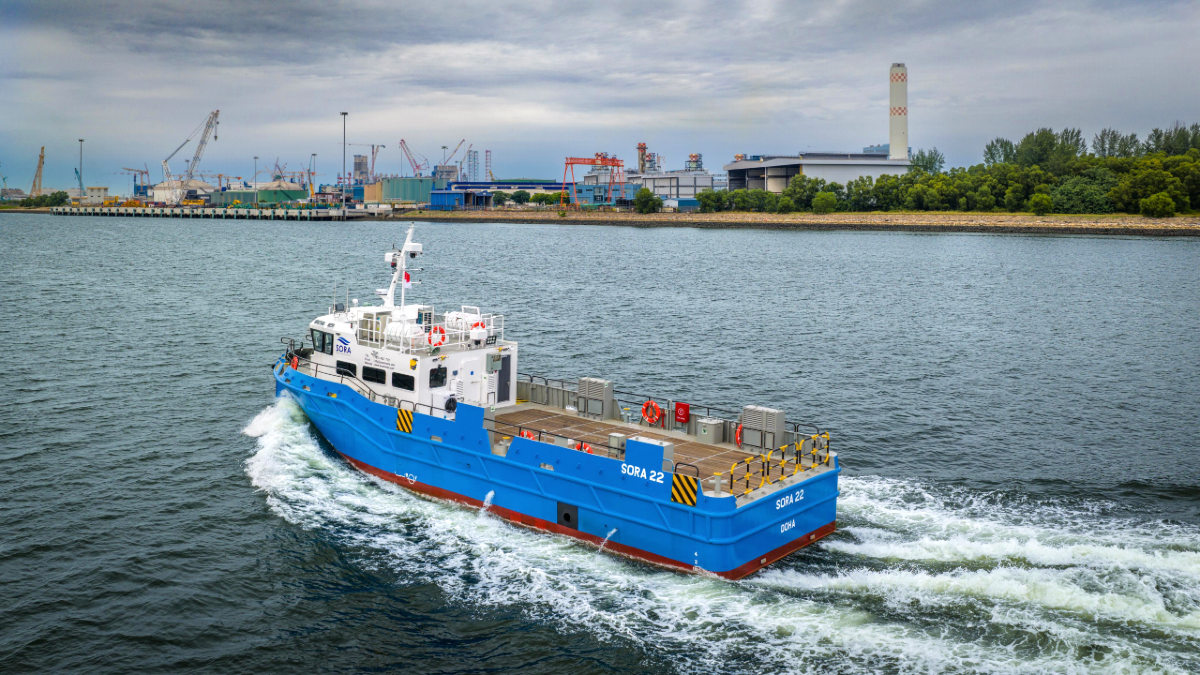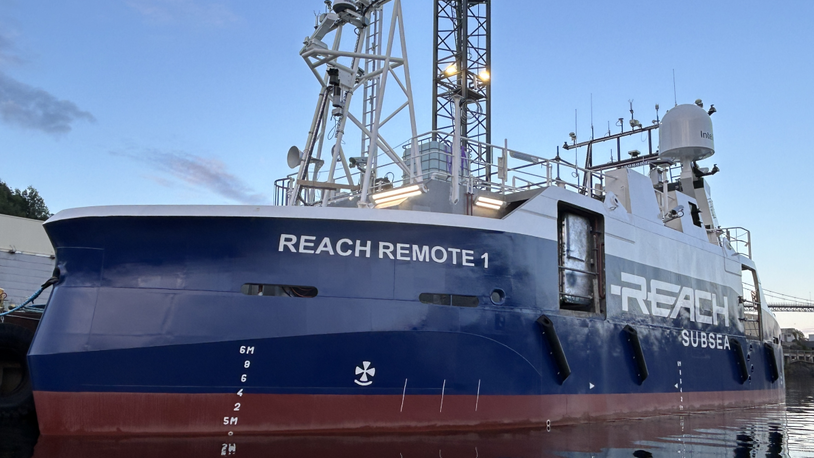Business Sectors
Events
Ship Recycling Webinar Week
Contents
Many happy returns for OSV owners in 2024 and beyond
With offshore oil and gas demand continuing to ratchet up, the supply of available tonnage limited and the odds of newbuild ordering virtually nil, offshore support vessel owners can look forward to ‘many happy returns’ in 2024 and beyond, driven by increasing day rates, stronger utilisation and growing asset values
This “super cycle”, as leading shipbroker Mike Meade describes it, could last at least five years and potentially seven years, and follows on the heels of an eight-year-long down cycle in which the price of oil plunged, the offshore market cratered, and asset values sunk. Weak demand for OSVs combined with overzealous newbuilding programmes wiped some companies off the books, and those that did emerge from the prolonged downturn have been busy the last few years repairing their tattered balance sheets and restructuring their debt.
Veterans of offshore oil and gas market like Mr Meade are all too familiar with the cyclical nature of the business. But he sees the current upcycle playing out far differently than those he has experienced during his 40-year-plus career. In previous upcycles, “you had an increase in demand, so you needed to build more boats”. This was supported by three pillars: shipyard availability, cheap finance and shipowners willing to increase equity.
Back in the early 1980s during one upcycle, the “boat of choice” was the UT 704 design anchor handling tug supply (AHTS) vessel. “Of course, we built too many of them and we killed the market” he says, noting that so many OSVs were laid up side-by-side in Norway in the late 1980s, you could use them to walk across the fjords.
The most recent OSV upcycle (when oil was priced at over US$100 per barrel from 2009 to 2014) that led to overbuilding was fuelled by cheap financing in China, Norway and the US. At the time, Mr Meade says some owners were able to secure favourable terms of 1% down and 99% on delivery from Chinese shipyards. Once the market crashed, owners delayed construction or walked away from many of these orders and partially completed OSVs. Tonnage from this so-called ‘ghost fleet’ has weighed on the market for years.
But by 2019, there appeared to be light at the end of the tunnel; oil had fought its way back, rising from US$43.57 per barrel in January 2016 to US$72 by December 2019. But Covid put the brakes on the rally in March 2020, causing global energy demand destruction, and another oil price crash, hitting US$22.57 per barrel in April 2020.
With the pandemic starting to fade in the rearview mirror at the end of 2021, and energy demand on the rise, vessel demand began to ratchet up quickly in offshore oil and gas. With major plans to grow their oil and gas production over the next 10 years by 4M barrels per day, national oil companies in Saudi Arabia, Qatar and Abu Dhabi were among the first movers in the OSV market, Mr Meade says, snapping up China’s ghost fleet and ships laid up in Singapore. “They knew they were never going to see prices this low,” he says.
Other regions have now followed the Middle East, with increasing demand for OSVs for offshore oil and gas projects in West Africa, Brazil and southeast Asia. With the ghost fleet disappearing and no newbuilding tonnage available, secondhand boat prices “started to ramp up”, says Mr Meade.
“In 2018, a 10-year-old UT 755 – a commodity PSV – could be bought for less than US$1M. Today, it’s US$14M.”
A winner of the OSJ Lifetime Achievement Award in 2022, Mr Meade heads up Asia’s largest independent shipbroker, Singapore-based M3 Marine Group Pte. In October, the shipbroker expanded its global footprint to meet the needs of a resurgent offshore vessel market with the launch of London-based offshore brokerage M3 Marine Offshore Brokers UK Ltd (M3OBUK). The move allows the group to serve clients “anywhere, anytime”, offering offshore brokerage services for newbuildings, S&P and chartering.

A seller’s market
In describing the current volatile S&P landscape, Mr Meade says there is a disconnect between newbuild and secondhand OSV pricing. “Newbuild prices are going up exponentially. Older boat pricing is going up double exponentially”. As an example, he cites the rise in the value of existing anchor handlers, which have gone up 40% in just three months.
Asking prices for secondhand PSV tonnage “can change from week to week,” says M3OBUK managing director Robert Day. “A price offered one week might jump £2.0M (US$2.5M) the next. Demand is increasing but supply is not”, he says. With no new significant newbuilding capacity entering the market, “you are getting squeezed all the time. The sellers are now dictating everything rather than the buyers”. Concludes Mr Day, “The market has been flipped on its head”.
In the past, when more tonnage was available for sale, buyers might have had an opportunity to counteroffer. The current tight market offers little time and opportunity for haggling.
“There’s an educational process underway for both buyers and sellers,” says Mr Meade. Previously, a seller might have offered a vessel for sale at US$10M and a buyer might have made a counteroffer of US$9M. Now the market is so hot, if a seller offers a price of US$10M for an OSV, the buyer needs to almost accept on the spot or risk a possible price increase the next day.
“There has been a real shift; it’s a seller’s market, not a buyer’s,” says Mr Meade.
No major newbuilding near term
Both Mr Meade and Mr Day see little chance of major OSV newbuilding programmes in the near term. “We are not going to see the newbuilding programmes needed to absorb this current market demand,” says Mr Day. “Secondhand tonnage is going to be the only tonnage available, and prices are going to continue to go up.”
Financing an OSV for traditional oil and gas has become far more complex and expensive, and those favourable terms offered by Chinese shipyards in the past have dried up. And traditional banks are not interested in investing in fossil fuels. “Banks won’t lend to oil and gas, but private equity will,” says Mr Meade. And while private equity might be the way ahead to back some newbuilding, shipyard slots to construct OSVs are few and far between. On a recent visit to Chinese shipbuilders, Mr Meade observes that one could “not swing a cat in those shipyards”, noting they were all filled with high-value container ships, gas carriers, car carriers, windfarm vessels and other infrastructure.
“There are no slots in Chinese shipyards, and to get one you are going to have to be commercially competitive,” he says.

Day rates, newbuilds and secondhand values
Positive momentum in the offshore oil and gas market, driven by increased demand and tight vessel and rig supply, is translating into more commercially attractive day rates. In its Q3 2023 results, Tidewater reported average day rates have jumped about US$7,200 or nearly 70% since the offshore oil recovery began at the end of 2021. The average leading edge day rates for its large PSVs are US$28,600 in Q3 2023, up from US$23,500 per day in Q2 2023.
Despite this precipitous rise in day rates over the last 24 months, they are still not at the levels needed to justify newbuilds. An analysis by Tidewater suggested average day rates need to hit US$38,000 and utilisation be maintained at 90% to justify ordering a US$65M newbuild to achieve its cost of capital over a 20-year useful life.
“Rates have a bit to go,” observes Mr Meade. But he points out, “There will be an inflection point when the price of a secondhand vessel will come close to the price of a newbuild”. That day has not yet arrived but when it does, Mr Meade says, owners will have to address “the elephant in the room” – namely, what path are OSV owners going to choose to decarbonise their fleet operations over the next two decades? “If you are going to build a vessel with a 25- to 30-year life, what engines are you going to use? What fuel? What will fuel availability look like?” The energy transition has painted an even more complex and confusing newbuild picture for owners. Methanol, ammonia, hydrogen, LNG and biofuels or another alternative energy source will all be considered.
“No newbuilds, increasing demand and stagnant supply,” says Mr Day. “If you compound those things together, this means existing assets will continue increasing in value. Prices will keep pushing up and values will continue to rise”.
Mr Meade sees 2025 as the earliest start for any significant newbuild ordering. Given that and factoring in a delivery timeframe of 2 to 2.5 years, this means significant new tonnage capacity will not enter the market until 2027 or 2028.
One newbuild multi-purpose support vessel was ordered by the Norway-registered Hercules Supply in December, but as Mr Meade and other brokers point out, the vessel will incorporate components that were “lying in a warehouse at the shipyard” from a previous order that went into default. He says there are just a “handful” of similar opportunities for newbuilds that he is closely monitoring.
But waiting to construct a newbuild is not attractive right now, Mr Day points out. “After eight years of downturn, owners are ready to make money now. When the sun shines, you want to make hay. You want to get boats on the water now that can generate money quickly. This means you are going to look at secondhand tonnage”.
And while the OSV market has seen significant recent consolidation led by Tidewater, Mr Day sees the S&P market transforming with owners looking to acquire key fleet assets, instead of entire operations. He cites Tidewater’s acquisition of 37 PSVs from Solstad, Britoil Offshore Services purchase of 30 Vroon OSVs, and AD Ports takeover of 10 OSVs from E-NAV Offshore as prime examples.
“It’s about selecting the vessels you want and buying them” he says.
Both Mr Day and Mr Meade see the Middle East as potential big players in the secondhand tonnage market as Saudi Arabia, Qatar and Abu Dhabi look to underpin their ambitious plans for fossil fuel production growth, and possible new entrants are attracted by the resurgent oil and gas market.
One large fish that has yet to be reeled in is Bourbon. With one of the largest OSV fleets in the world, the Marseille-based OSV firm is controlled by creditors. “It’s a mammoth thing,” says Mr Day. “There was a rumour that circulated for a while concerning a possible sale to the Middle East”.
Bourbon is one of the companies to watch in 2024, say Mr Meade and Mr Day. They also point to Tidewater. “They are an industry leader and have been growing through consolidation and fleet acquisition”, says Mr Day.
Mr Meade thinks the market should keep a close eye on Britoil Offshore Services, which has skyrocketed in a short time to climb the standings of the top 10 OSV owners, with its purchase of 30 PSVs from Vroon and its addition of top talent from the former Swire Pacific Offshore.
So, what is the outlook for the OSV market in 2024? “2023 was an exciting year for owners, and 2024 is going to be as equally interesting,” concludes Mr Day.
Says Mr Meade, “These days, I see a lot of smiling faces, and I think we are in for more good times”.
Riviera Maritime Media’s OSJ Week kicks off on 6 February with two simultaneous, well-established, one-day events: the Offshore Wind Journal Conference and the Offshore Support Journal Subsea Conference.
Followed by the Offshore Support Journal Conference, Awards and Exhibition 2024 will be held in London on 7-8 February 2024. Click here to purchase tickets and attend this industry-leading event.
For more about OSJ Week, click here.
Related to this Story
Events
Ship Recycling Webinar Week
International Bulk Shipping Conference 2025
Tankers 2030 Conference
Maritime Navigation Innovation Webinar Week
© 2024 Riviera Maritime Media Ltd.














